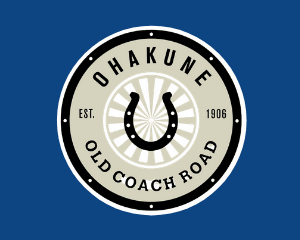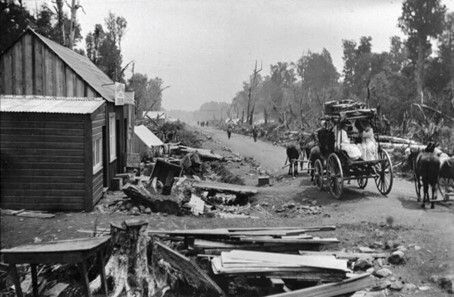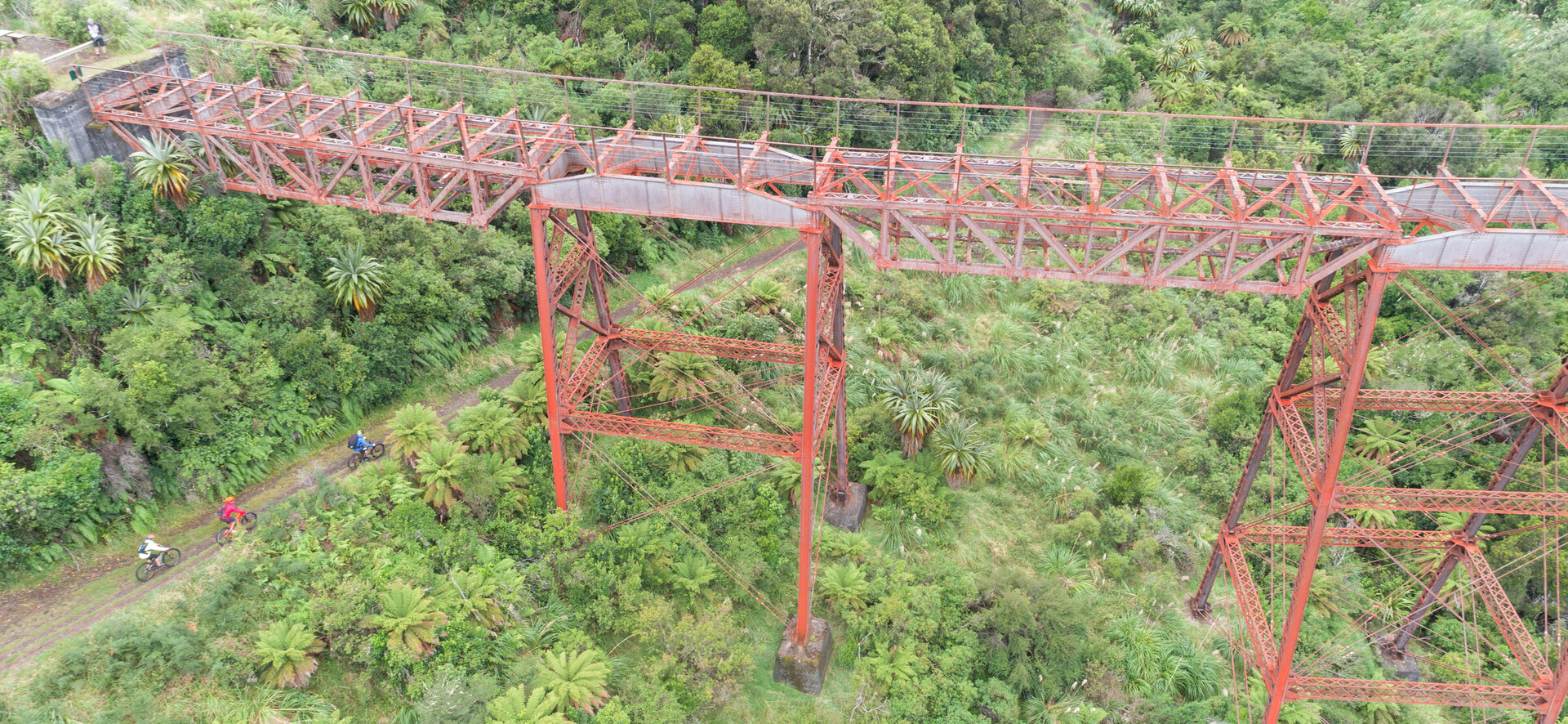History of Ohakune Old Coach Road


The Ohakune Old Coach Road was originally part of an extensive network of trails associated with bird snaring trees used by tangata whenua between the plains and the mountain.
Sections of these trails were included in the original route surveyed by John Rochfort in 1884. By 1889 the track was suitable for horses and marked as a bridle track and in 1885 it was upgraded to a dray road suitable for pulling a dray (simple cart or wagon) at a cost of a £1131.
Due to slow progress in joining the two railheads, the road was upgraded in 1906 - and it is this purpose built cobble road that provided the origins of its current name.
The Ohakune Old Coach Road provided an all-weather road link for horse-drawn coaches carrying passengers and goods between the two railheads of the North Island main trunk line. With progress on completing the North Island main trunk rail slow due to the rugged landscape, the road provided a way to allow through traffic, until the railheads were finally linked in 1908.
It mostly followed the route of a bridle track (except for the section to Taonui Viaduct) completed in 1886 that had been upgraded to a dray road in 1895. Between 1904 and 1906 it was upgraded, being mostly paved with setts (rock pavers), giving it a durable, all-weather surface for heavy horse-drawn traffic. It was completed in November 1906, at a point when the distance between the railheads was 39 kilometres.
The road was used until early 1909 and after the opening of State Highway 49 fell into disuse. It remained mostly untouched since, though some sections have been lost through deviation of the railway in 1987.
The track takes in two disused viaducts that were part of the original line, that have now been replaced and the track realigned.
The Taonui Viaduct shares many of the features of the nearby Hapuawhenua Viaduct which was also designed by Peter Seton Hay. They share the same construction methods, and unique curved style. The Taonui Viaduct differs only in its smaller size (140m long and 35m high), aspect, and fact that it is built on a 1 in 60 gradient.
The Hapuawhenua Viaduct was an engineering marvel in 1908 and became the poster child of New Zealand Rail. It is 45 metres high, 300 metres long and curved throughout its length. The viaduct consists of 13 concrete piers and four 4-legged steel towers resting on concrete foundation blocks. There are four steel plate girder tower spans of 11 metres, five 20 metre lattice truss spans and thirteen 11 metre plate girders. In total the viaduct is 284 metres long and at its maximum it stands 45 metres high. It is unique in that it is built on a 10-chain radius curve, reflecting the difficult landscape through which it passes.
The viaduct has now been refurbished, and you can ride or walk across it. It was also the sight of the world's first ever commercial Bungy Jumping venture by A J Hackett.
The road can be considered a most significant example of roading engineering heritage, and the finest rural road constructed in New Zealand up to that time. It has great historic significance for the period it was used as the link between the two ends railheads. The end of the road’s useful life froze it in time and, other than the natural deterioration it has undergone since its use stopped, it is in remarkably good condition.
The viaducts and the Old Coach Road have Category I Historic Places status from Historic Places Trust.
Ohakune Old Coach Road reopened to the public as part of Mountains to Sea - Nga Ara Tūhono on the 2nd of July 2010 after significant work by the local community including Ohakune 2000, the Tongariro Natural History Society, and many more.
There are numerous information boards along the track explaining the history of the track and the building of the railway.






